Chrysler 2007 Annual Report Download - page 191
Download and view the complete annual report
Please find page 191 of the 2007 Chrysler annual report below. You can navigate through the pages in the report by either clicking on the pages listed below, or by using the keyword search tool below to find specific information within the annual report.-
 1
1 -
 2
2 -
 3
3 -
 4
4 -
 5
5 -
 6
6 -
 7
7 -
 8
8 -
 9
9 -
 10
10 -
 11
11 -
 12
12 -
 13
13 -
 14
14 -
 15
15 -
 16
16 -
 17
17 -
 18
18 -
 19
19 -
 20
20 -
 21
21 -
 22
22 -
 23
23 -
 24
24 -
 25
25 -
 26
26 -
 27
27 -
 28
28 -
 29
29 -
 30
30 -
 31
31 -
 32
32 -
 33
33 -
 34
34 -
 35
35 -
 36
36 -
 37
37 -
 38
38 -
 39
39 -
 40
40 -
 41
41 -
 42
42 -
 43
43 -
 44
44 -
 45
45 -
 46
46 -
 47
47 -
 48
48 -
 49
49 -
 50
50 -
 51
51 -
 52
52 -
 53
53 -
 54
54 -
 55
55 -
 56
56 -
 57
57 -
 58
58 -
 59
59 -
 60
60 -
 61
61 -
 62
62 -
 63
63 -
 64
64 -
 65
65 -
 66
66 -
 67
67 -
 68
68 -
 69
69 -
 70
70 -
 71
71 -
 72
72 -
 73
73 -
 74
74 -
 75
75 -
 76
76 -
 77
77 -
 78
78 -
 79
79 -
 80
80 -
 81
81 -
 82
82 -
 83
83 -
 84
84 -
 85
85 -
 86
86 -
 87
87 -
 88
88 -
 89
89 -
 90
90 -
 91
91 -
 92
92 -
 93
93 -
 94
94 -
 95
95 -
 96
96 -
 97
97 -
 98
98 -
 99
99 -
 100
100 -
 101
101 -
 102
102 -
 103
103 -
 104
104 -
 105
105 -
 106
106 -
 107
107 -
 108
108 -
 109
109 -
 110
110 -
 111
111 -
 112
112 -
 113
113 -
 114
114 -
 115
115 -
 116
116 -
 117
117 -
 118
118 -
 119
119 -
 120
120 -
 121
121 -
 122
122 -
 123
123 -
 124
124 -
 125
125 -
 126
126 -
 127
127 -
 128
128 -
 129
129 -
 130
130 -
 131
131 -
 132
132 -
 133
133 -
 134
134 -
 135
135 -
 136
136 -
 137
137 -
 138
138 -
 139
139 -
 140
140 -
 141
141 -
 142
142 -
 143
143 -
 144
144 -
 145
145 -
 146
146 -
 147
147 -
 148
148 -
 149
149 -
 150
150 -
 151
151 -
 152
152 -
 153
153 -
 154
154 -
 155
155 -
 156
156 -
 157
157 -
 158
158 -
 159
159 -
 160
160 -
 161
161 -
 162
162 -
 163
163 -
 164
164 -
 165
165 -
 166
166 -
 167
167 -
 168
168 -
 169
169 -
 170
170 -
 171
171 -
 172
172 -
 173
173 -
 174
174 -
 175
175 -
 176
176 -
 177
177 -
 178
178 -
 179
179 -
 180
180 -
 181
181 -
 182
182 -
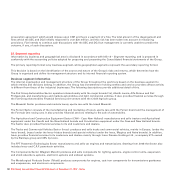 183
183 -
 184
184 -
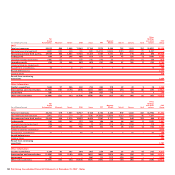 185
185 -
 186
186 -
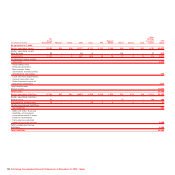 187
187 -
 188
188 -
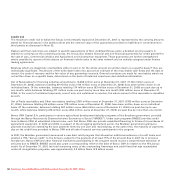 189
189 -
 190
190 -
 191
191 -
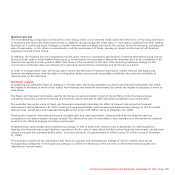 192
192 -
 193
193 -
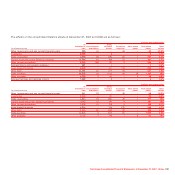 194
194 -
 195
195 -
 196
196 -
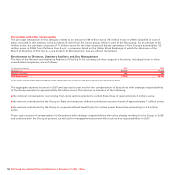 197
197 -
 198
198 -
 199
199 -
 200
200 -
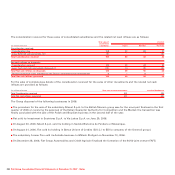 201
201 -
 202
202 -
 203
203 -
 204
204 -
 205
205 -
 206
206 -
 207
207 -
 208
208 -
 209
209 -
 210
210 -
 211
211 -
 212
212 -
 213
213 -
 214
214 -
 215
215 -
 216
216 -
 217
217 -
 218
218 -
 219
219 -
 220
220 -
 221
221 -
 222
222 -
 223
223 -
 224
224 -
 225
225 -
 226
226 -
 227
227 -
 228
228 -
 229
229 -
 230
230 -
 231
231 -
 232
232 -
 233
233 -
 234
234 -
 235
235 -
 236
236 -
 237
237 -
 238
238 -
 239
239 -
 240
240 -
 241
241 -
 242
242 -
 243
243 -
 244
244 -
 245
245 -
 246
246 -
 247
247 -
 248
248 -
 249
249 -
 250
250 -
 251
251 -
 252
252 -
 253
253 -
 254
254 -
 255
255 -
 256
256 -
 257
257 -
 258
258 -
 259
259 -
 260
260 -
 261
261 -
 262
262 -
 263
263 -
 264
264 -
 265
265 -
 266
266 -
 267
267 -
 268
268 -
 269
269 -
 270
270 -
 271
271 -
 272
272 -
 273
273 -
 274
274 -
 275
275 -
 276
276 -
 277
277 -
 278
278 -
 279
279 -
 280
280 -
 281
281 -
 282
282 -
 283
283 -
 284
284 -
 285
285 -
 286
286 -
 287
287 -
 288
288 -
 289
289 -
 290
290 -
 291
291 -
 292
292 -
 293
293 -
 294
294 -
 295
295 -
 296
296 -
 297
297 -
 298
298 -
 299
299 -
 300
300 -
 301
301 -
 302
302 -
 303
303 -
 304
304 -
 305
305 -
 306
306 -
 307
307 -
 308
308 -
 309
309 -
 310
310 -
 311
311 -
 312
312 -
 313
313 -
 314
314 -
 315
315 -
 316
316 -
 317
317 -
 318
318 -
 319
319 -
 320
320 -
 321
321 -
 322
322 -
 323
323 -
 324
324 -
 325
325 -
 326
326 -
 327
327 -
 328
328 -
 329
329 -
 330
330 -
 331
331 -
 332
332 -
 333
333 -
 334
334 -
 335
335 -
 336
336 -
 337
337 -
 338
338 -
 339
339 -
 340
340 -
 341
341
 |
 |
The trading flows exposed to changes in these exchange rates amounted in 2007 to about 72% of the total currency risk from
trading transactions. Other significant exposures regard the exchange rates EUR/CHF, EUR/TRY, USD/CAD, AUD/USD, GBP/USD and
USD/JPY. None of these exposures, taken individually, exceeded 5% of the Group’s total transaction exchange risk exposure in
2007. It is the Group’s policy to use derivative financial instruments to hedge a certain percentage, on average between 55% and
85%, of the trading transaction exchange risk exposure forecast for the coming 12 months (including such risk beyond that date
where it is believed to be appropriate in relation to the characteristics of the business) and to hedge completely the exposure
resulting from firm commitments.
■Group companies may find themselves with trade receivables or payables denominated in a currency different from the money of
account of the company itself. In addition, in a limited number of cases, it may be convenient from an economic point of view or it
may be required under local market conditions, for companies to obtain finance or use funds in a currency different from the
money of account. Changes in exchange rates may result in exchange gains or losses arising from these situations.
It is the Group’s policy to hedge fully, whenever possible, the exposure resulting from receivables, payables and securities
denominated in foreign currencies different from the company’s money of account.
■Certain of the Group’s subsidiaries are located in countries which are not members of the European monetary union, in particular
the United States, Canada, United Kingdom, Switzerland, Brazil, Poland, Turkey, India, China, Argentina and South Africa. As the
Group’s reference currency is the Euro, the income statements of those countries are converted into euros using the average
exchange rate for the period, and while revenues and margins are unchanged in local currency, changes in exchange rates may
lead to effects on the converted balances of revenues, costs and the result in Euros.
■The assets and liabilities of consolidated companies whose money of account is different from the euros may acquire converted
values in euros which differ as a function of the variations in exchange rates. The effects of these changes are recognised directly in
the item “Cumulative translation differences” included in stockholders’ equity (see Note 25).
The Group monitors its principal exposure to conversion exchange risk, although there was no specific hedging in this respect at
the balance sheet date.
There have been no substantial changes in 2007 in the nature or structure of exposure to currency risk or in the Group’s hedging
policies.
Sensitivity analysis
The potential loss in fair value of derivative financial instruments held by the Group at December 31, 2007 for managing exchange
risk (currency swaps/forward, currency options and interest rate and currency swaps), which would arise in the case of a
hypothetical, unfavourable and instantaneous change of 10% in the exchange rates of the major foreign currencies with the Euro,
amounts to approximately 580 million euros (460 million euros at December 31, 2006). The valuation model for currency options
assumes that market volatility at year end remains unchanged. Receivables, payables and future trade flows whose hedging
transactions have been analysed were not considered in this analysis. It is reasonable to assume that changes in exchange rates
will produce the opposite effect, of an equal or greater amount, on the underlying transactions that have been hedged.
The increase over the prior year is mainly due to the derivatives hedging the 1 billon euros bond issued by Fiat Finance North
America Inc.
Fiat Group Consolidated Financial Statements at December 31, 2007 - Notes190
